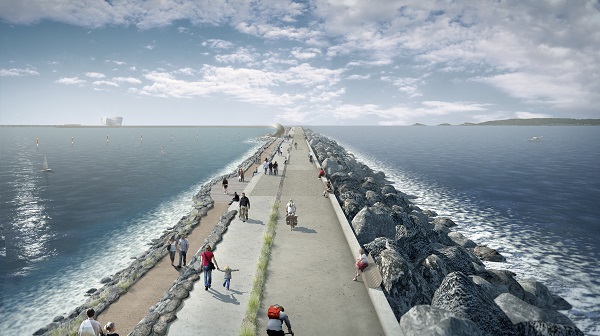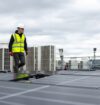Hendry Review Gives Thumbs-up to Tidal Lagoons
Renewable source could provide up to 10% of UK electricity
A government report on the feasibility of using tidal lagoons to provide up to 10% of the UK’s electricity, the Hendry Review, has come out very strongly in favour of them. Former Energy Minister Charles Hendry says, “I believe that the evidence is clear that tidal lagoons can play a cost-effective role in the UK’s energy mix and there is considerable value in a small (less than 500 MW) pathfinder project. I conclude that tidal lagoons would help deliver security of supply; they would assist in delivering our decarbonisation commitments; and they would bring real and substantial opportunities for the UK supply chain.
“Most importantly, it is clear that tidal lagoons at scale could deliver low carbon power in a way that is very competitive with other low carbon sources.”
The pilot project to deliver 320MW, in Swansea Bay, enough to power 155,000 homes, is ready to go ahead. Former PM David Cameron instituted the review last year as he was unsure whether tidal lagoons would deliver value for money, despite France having one which has been running for over 50 years. Tidal Lagoons are expected to have a lifespan of 120 years or more. The Hendry Review has come out strongly in favour of this technology.
It works by walling off an area of the coast and using an array of turbines to deliver reliable baseload power – the sort now provided by nuclear reactors and coal-fired power stations. The Swansea Bay project would cost £1.3 billion, from private capital, and have a 9.5 Km breakwater surrounding it. There have already been extensive environmental investigations and consultations – local public opinion is strongly supportive of the project.

Artist’s impression of arrival area with rockpools
Hendry continues, “Tidal lagoons can be an important and exciting new industry for the United Kingdom. We are blessed with some of the best resources in the world, which puts us in a unique position to be world leaders.
“The costs of a pathfinder project would be about 30p per household per year over the first 30 years. A large scale project would be less than 50p over the first 60 years. The benefits of that investment could be huge, especially in South Wales, but also in many other parts of the country. Having looked at all the evidence, spoken to many of the key players, on both sides of this debate, it is my view that we should seize the opportunity to move this technology forward now.”
Mark Shorrock, CEO of Tidal Lagoon Power, the company behind the Swansea Bay project, says, “Home-grown power from the tides, starting at Swansea Bay, is something we can all agree on: communities and investors, conservationists and industrialists, politicians of all persuasions and now an independent government review, all singing from the same hymn sheet. Swansea Bay Tidal Lagoon is a vision of how Great Britain can replace part of our ageing power station fleet with low cost, reliable power that also revitalises our industrial heartlands and coastal communities.”
This is planned to be the first of six around the UK coastline, with the second probably in Cardiff Bay, which has the second highest tidal range in the world. That would generate up to 3GW of energy, or the same as a large conventional power station.
John Feddersen, chief executive of analysts Aurora Energy Research, said: “As a trial to see if it works, yes, I think Swansea is a sensible thing to do.” The group stated that if ten lagoons were built in the UK by 2030, these would provide 10% of electricity generation, cut carbon emissions by 36%, and add £8 to £9 to the average annual household energy bill.
http://www.tidallagoonpower.com
https://hendryreview.wordpress.com
Please Visit Green Jobs for the latest types of Jobs:
- Energy Efficiency Jobs
- Energy Jobs
- Energy Policy Jobs
- Energy Saving Jobs
- Marine Energy Jobs
- Marine Jobs
- Tidal Energy Jobs
- Tidal Jobs
- Wave Energy Jobs
- Wave Jobs
Please Visit Renewable Energy Jobs for the latest Renewable Energy Jobs and Renewable Jobs




